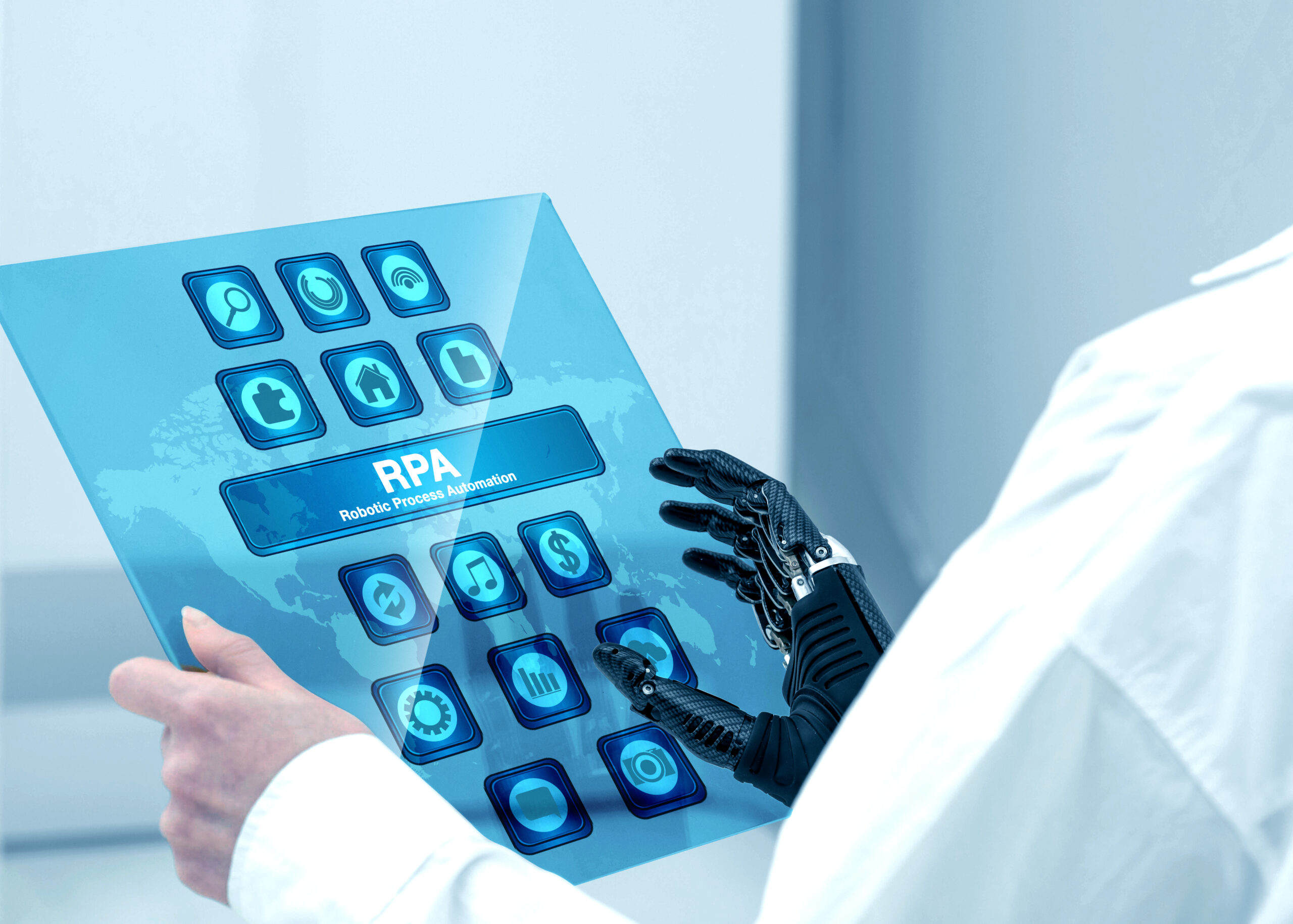
- Automation enables the healthcare sector overcome shortcomings of legacy systems and provide better patient care.
- Hyperautomation enables healthcare automation algorithms to refine healthcare processes.
- Intelligent automation can be integrated across multiple healthcare workflows such as administrative tasks, claims processing, patient care, and more.
- Hyperautomation is relevant in the current healthcare scenario because of the heavy reliance of healthcare services on EHR, wearable sensors, healthcare apps, and digital patient engagement.
- Hyperautomation supports healthcare professionals by streamlining the different workflows so that they can focus on patient care.
The COVID-19 pandemic has propelled the digital transformation journey of the healthcare sector. Healthcare service providers have recognized the vital role that technology can play in enhancing patient care. A Mckinsey report indicates that the pandemic has increased Telehealth usage from 11% to 76%. (Source: Intellisoft.io)
The healthcare sector is struggling with the shortcomings of legacy systems such as:
- Inefficient healthcare systems
- Coping with the demand for reliable and faster data processing
- Error-prone manual tasks
- Inefficient healthcare delivery
One of the most important factors responsible for all these shortcomings is the acute shortage of medical professionals. Automation is the most effective way to address this shortage. Automation technologies perform several tasks independently relieving the staff of tasks requiring human intervention. While automation addresses several limitations of legacy systems, many healthcare professionals are still skeptical about adopting automation. The reasons for the reservations are the high cost of automation, difficulty in integrating automation into their existing systems, a mindset that automation will replace humans, etc. However, continuing with legacy systems is not a very lucrative option because most manufacturers no longer offer support to obsolete legacy systems. This is why many healthcare service providers are taking baby steps to implement automation.
Many healthcare service providers have deployed Robotic Process Automation (RPA) to streamline various administrative and non-administrative tasks. RPA bots have replaced humans to perform tasks such as claims processing, billing, etc. RPA has minimized errors and improved the speed and accuracy of these processes. However, RPA suffers from limitations such as the inability to automate and process unstructured data.
This is where smart technologies such as Artificial Intelligence (AI) and its subsets Machine Learning (ML), NLP (Natural Language Processing), etc., have a role to play. AI integrates analysis, reasoning, judgment, and decision-making in automation.
Hyperautomation or Intelligent automation is an automation solution that leverages technologies both RPA and AI to streamline processes and workflows. Intelligent automation enables healthcare automation algorithms to refine healthcare processes. It facilitates the interpretation of both structured and unstructured data and quick decision-making. Intelligent automation can be integrated across multiple healthcare workflows such as administrative tasks, claims processing, patient care, and more. It automates a series of related tasks and directs human workflows to offer patient-centric services.
A patient-centric approach is required because the awareness of the patients has increased and they have become more demanding. Patients are looking for convenient, transparent, and personalized healthcare services.
Hyperautomation is relevant in the current healthcare scenario because of the heavy reliance of healthcare services on EHR, wearable sensors, healthcare apps, and digital patient engagement. Large volumes of data are generated through multiple touchpoints. Hence, it is imperative that the right tools and technologies are deployed to efficiently harness the data to identify the needs of the patients. The data not only helps provide personalized patient care but also helps identify the areas of improvement.
How Hyperautomation Streamlines Healthcare Services?
Automation of Workflows
RPA automates simple rule-based tasks. Technologies such as AI, ML, and Computer Vision (CV) can perform data recognition and more complex tasks. Self-learning technologies like ML enhance operations by leveraging historical data.
Data Transparency
Automation reduces medical errors and improves health literacy. It also facilitates patient involvement, collocation, and engagement with healthcare professionals. Patients can access their data and regulate it to correct inaccuracies. Patients can update the data from various health-tracking apps and wearable devices. All this data helps doctors in accurate diagnosis and provide better treatment.
TeleHealth Services
The pandemic has introduced the system of teleconsulting and remote care. Automation enables healthcare professionals to monitor patients remotely by deploying data analytics, digital health assistants, and wearables. Patients are encouraged to monitor parameters such as heart rates, glucose levels, oxygen levels, blood pressure, etc. using devices and apps. They can update this information for the doctors to access. Doctors can provide treatment plans and care recommendations remotely. Patients receive timely medical care at their convenience.
AI-based Chatbots
Chatbots help resolve patient queries by providing a communication channel between patients and healthcare providers. They can be used in various areas of patient care. One example is claims management. Chatbots facilitate hassle-free claims management by connecting patients, healthcare providers, and Insurance companies. They also enable relevant healthcare professionals and various stakeholders to access data as and when required.
Implementing hyper-automation requires a well-laid-out strategy in which all stakeholders work together to ensure that an efficient automation solution is integrated with the existing system.
How to Implement Healthcare Hyperautomation?
Step 1: Gather all the data about the existing processes, workflows, environments, etc. Assess the areas where hyper-automation can enhance productivity.
Step 2: Establish a well-defined automation strategy.
Step 3: Allocate an automation budget such that the expense of automation aligns with the expected results.
Step 4: Make sure that you have all the automation tools and the infrastructure required to implement hyper-automation. It is important that you have an experienced technical team to implement automation solutions.
Step 5: Leverage advanced analytics and process mining tools to Identify the processes and workflows that can be automated.
Step 6: Identify the risks and challenges that the system is vulnerable to while implementing automation. Build strategies to overcome risks.
Step 7: Automate repetitive processes with Robotic Process Automation.
Step 8: Integrate AI technologies to automate workflows.

Hyperautomation works seamlessly in the healthcare sector if the right software is selected and integrated into the workflow. You will need the guidance of an automation expert to choose the best automation solution. The automation professionals at Auxiliobits can help you select and implement the best automation platforms for your healthcare services.
Auxiliobits is an automation software development consultancy that develops, tests, and integrates automation software for various industries. We have streamlined the services offered by healthcare providers with custom automation solutions. We provide automation solutions that enhance communication between different departments and store patient data securely in a central repository.
Why Auxiliobits?
- Auxiliobits has years of experience in providing end-to-end healthcare automation solutions to clients across the globe.
- We have been reliable technology partners to our clients.
- We provide customized healthcare automation solutions to our clients.
- Our technical team understands the nuances of healthcare systems and provides automation solutions aligned with them.
- We ensure compliance and provide secure automation technology.
- Our professional team integrates the automation bots seamlessly with your existing system at minimal costs.
Final Takeaway
Hyperautomation offers an end-to-end automation solution for the healthcare sector. Hyperautomation includes automation of individual processes using RPA and workflow intelligent automation using AI. These technologies enhance the efficiency and productivity of the services provided thereby enhancing the patient experience. However, hyper-automation cannot replace humans in the healthcare sector because this sector requires a human touch. Patients need empathy and personalized care from healthcare professionals. Hyperautomation supports healthcare professionals by streamlining the different workflows so that they can focus on patient care.
Connect with us for hyper-automation solutions for your healthcare services.
Read our forthcoming blogs to find out how healthcare automation solutions are revolutionizing the sector!






